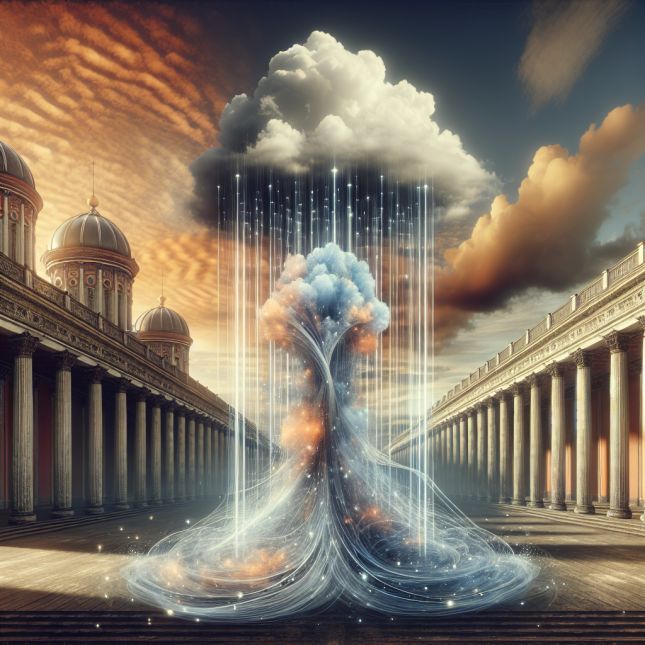What Is Swarm Intelligence? How Collective Algorithms Mimic the Herd
He who trims himself to suit everyone will soon whittle himself away. Raymond Hull
April 15, 2025
Swarm Intelligence: AI Just Became the Crowd—Good Luck With That
They said AI would outthink us. Outtrade us. Outsurvive us. But what happens when the machine doesn’t ascend to godhood… it just joins the mob?
Welcome to the era where AI becomes the crowd—dressed up in neural nets and deep learning, yet moving with the same dumb fear-and-greed pulse that’s led every stampede off every market cliff. The intelligence might be artificial, but the herd behavior is all too real. Swarm intelligence, they call it. Sounds brilliant in theory. But in the markets? That’s just crowd behavior with a motherboard. And guess what? The crowd still loses.
The Dream of the Hive Mind
Swarm intelligence has roots in biology—think ants forming bridges, birds flocking in perfect synchronicity, and bees choosing the best hive location via a decentralized vote. Elegant. Efficient. Nature’s code runs on simple rules and emergent order. Tech futurists saw this and thought, “What if we could replicate that for trading?”
Feed a thousand data points into an algorithm. Let it self-organize, self-correct, and optimize. Bring in the crowd—Reddit, Twitter, Discord—aggregate sentiment, extract signal. The result? A hive mind that sees around corners, makes better bets, and avoids emotional traps.
But that dream hinges on one assumption: that humans—or their proxies—can act rationally and cooperatively when money’s on the line. They can’t. They don’t. They never have.
2. The Myth of the Smart Swarm
The flaw in swarm intelligence isn’t the math—it’s the meat. People aren’t ants. Ants don’t chase yield. Bees don’t panic sell.
Incentive misalignment, cognitive bias, and emotional contagion hijack the swarm. What starts as collective wisdom mutates into echo chamber hysteria. Everyone follows everyone, believing someone knows something, until no one knows anything—and it’s already too late.
History is full of this:
- Dot-com euphoria where valuations didn’t matter.
- 2008 housing euphoria where “real estate never goes down.”
- Meme stocks in 2021 where GameStop became religion.
Swarms don’t predict. They confirm. By the time consensus hits, you’re no longer early—you’re liquidity for someone who was.
Market Swarms Turn into Stampedes
Markets don’t punish individuals. They punish patterns. Swarm logic becomes predictable, exploitable. And once exploitable, it dies.
Take the tulip mania. Or the South Sea Bubble. Or more recently, crypto cycles. Hype morphs into mass action, price surges on emotion, then gravity hits. Why? Because the crowd over-commits, over-leverages, and over-believes.
The mass doesn’t question the narrative—it fuels it. It builds until it collapses.
Vector thinking sees it as compression: energy builds under consensus pressure. Then a trigger—a policy shift, a rug-pull, a whale dump—releases it violently. That’s the essence of volatility. That’s where the money is.
Swarms are stable until they’re not. They snap.
AI: The New Participant in the Herd
So here comes AI—trained on decades of data, price patterns, and sentiment feeds. It’s fast, cold, logical.
Except it’s not. It’s just mimicry. An elegant reflection of past behavior, sanitized and statistical. And if it learns from human markets, guess what it learns? Human mistakes.
AI is the ultimate follower. It predicts based on what already happened. It doesn’t ask “why,” it just calculates “when and how much.” But if it’s built on crowd behavior, it is the crowd.
We already saw this in 2021–2022 when funds used AI sentiment tracking tools. They bought tech at the top, sold defensives at the bottom. Flash crashes? High-frequency trading feedback loops. AI chasing AI chasing humans chasing narratives.
That’s not intelligence. That’s recursion.
Monkeys with Darts Outperforming
In 1973, Burton Malkiel claimed a blindfolded monkey throwing darts could pick stocks and a pro. He wasn’t wrong. Numerous studies have since confirmed it: Random portfolios often outperform over-optimized ones.
Why? Because randomness avoids overfitting. It avoids the trap of logic. The monkey doesn’t chase fads. It doesn’t care about momentum or headlines. It simply chooses.
The more AI tries to emulate logic, the more it steps into the same traps—buying what everyone else buys at the exact wrong time. Dumb luck beats smart mimicry when the playing field shifts.
Trading Requires Divergence, Not Convergence
Markets reward disobedience. The profit isn’t in the trend—it’s in the pivot. Swarm logic seeks convergence, but convergence is where alpha dies.
To win, you have to think against the grain. Vector logic again: price moves in reaction to force. Technical analysis tracks these vectors—the accumulation at lows, the distribution at highs, the divergence between price and volume, the fading RSI at euphoric peaks.
The crowd doesn’t see that. It sees headlines. It sees narratives. It reacts.
The swarm is reactive. Traders must be proactive. That’s where non-linear thinking thrives. You don’t follow the map. You burn it and build a new one with every move.
The Final Trap: If AI Wins, Volatility Dies
Here’s the kicker.
Let’s say AI gets so good it replaces emotional human traders. All trades are now logical. There is no panic, greed, FOMO, or other emotions. There is perfect execution.
Sounds like paradise? It’s hell.
Volatility vanishes. And with it, opportunity. No more capitulation bottoms to buy. No more blow-off tops to short. Just orderly curves and sterile efficiency.
A market without emotion is a market without movement. Without mistakes. Without edge.
And if there’s no edge, there’s no game. Just entropy.
Conclusion – Swarm Is Just the Crowd With a WiFi Connection
Swarm intelligence doesn’t escape the crowd—it digitizes it. Scales it. But the essence remains: a loop of reactions without vision.
In the end, markets aren’t tamed by logic. They’re driven by chaos, emotion, and disobedience. AI can simulate the past. But only human madness creates the future.
The swarm loses whether it’s flesh or code.
So, trade like a vector. Think like a contrarian. And leave the swarm to eat itself.
Ideas That Shift the Landscape













